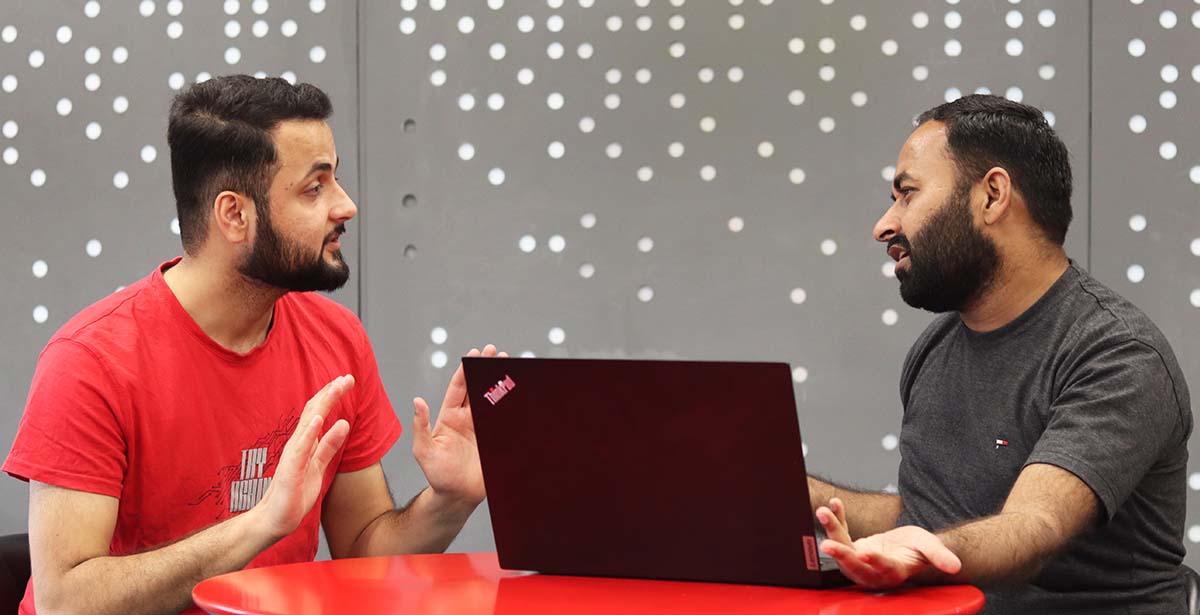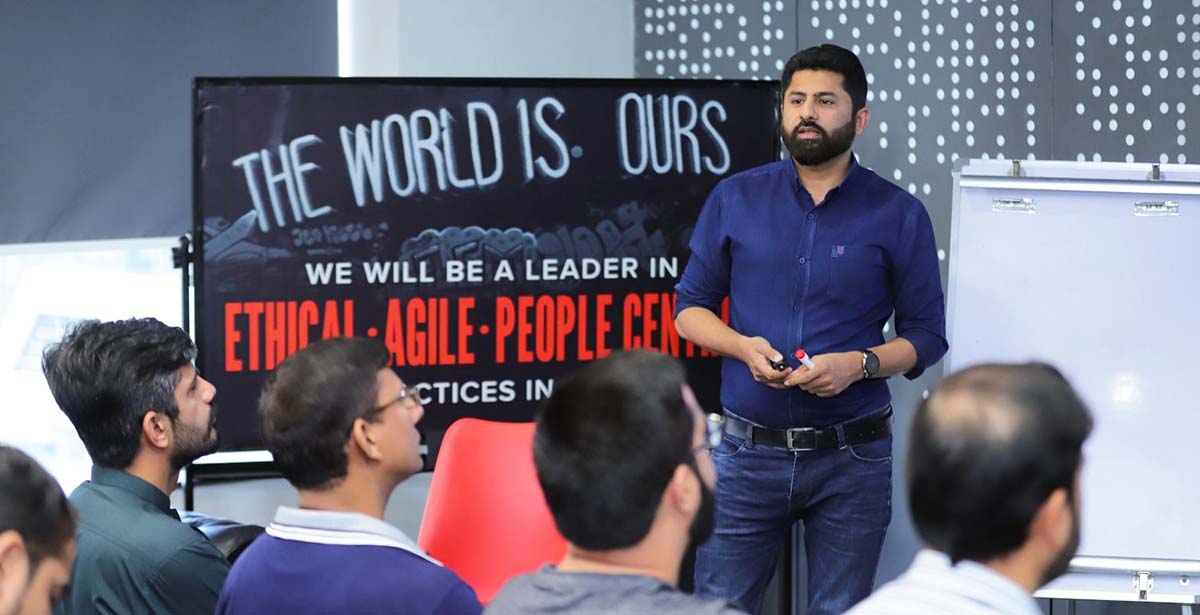Lessons on Navigating IT Operations out of a Crisis

The coronavirus (COVID-19) outbreak introduced unknown variables which put the IT industry’s preparedness to the test. Especially when it comes to IT operations.
Typical contingency plans ensure operational effectiveness after events like natural disasters or cyber incidents. However, most don’t take into account widespread quarantines, travel restrictions, etc. that follow such global health emergencies.
Therefore, as the pandemic receded and our office re-opened, it’s time to reflect on the IT operations lessons those two years taught us.
Agile Is Not a Requirement; It’s a Need for Smooth IT Operations
COVID-19 began spreading in Pakistan by March 2020. Come March 26, 2020, the government imposed restrictions and declared nation-wide quarantine.
Within a week, DPL Rebels were working from home. This wasn’t an easy feat. However, it could have been impossible had DPL not been structured to “Be Agile” rather than just “Do Agile.”
“Doing Agile” means that an organization has implemented Agile processes by –
- Adopting an iterative approach for projects and breaking them down into incremental steps.
- Managing workflows with a Kanban board or using Scrum.
On the other hand, being Agile goes beyond the above two activities and applies an Agile mindset across the business. While this requires more effort and commitment, it empowers organizations to adapt quicker to change while learning something new. That’s why being Agile is superior to doing Agile.
True to Agile core values and principles, we had everything we needed in place even prior to the pandemic. Moreover, every member of our team was trained to be Agile, be it the developers or Product Owners. This gave us an advantage and helped us succeed where many others have failed.
Self-Motivation Is a Need That MUST Be Addressed
Initially, there was a lot of excitement surrounding work from home. If there was a way to refer to it, it would be a sense of “euphoria.”
Especially for workforce members originally from different parts of the country. For them, being home with their loved ones made the ordeal less hectic.
In fact, three to four months into remote work, DPL did better. As the Rebels were strictly confined to their homes and barely socializing, they became more productive. By the end of the first year, however, productivity took a nosedive.
Rebels were getting burned out. The lack of socialization caused confusion and left them uninspired and unmotivated. This highlighted an issue which we at IT operations had to quickly address: self-motivation.
On any given day, motivation levels drop when there’s a deficit in autonomy, competence, and relationships. The pandemic wiped out all of these three in one go. This further contributed to the existing issue of lack of self-motivation, a problem 95% of the IT workforce suffers from.
Self-motivation is the internal drive to accomplish tasks and meet goals. Without it, teams wouldn’t be inspired, company growth would slow down, and Rebels would not be self-sufficient. The lack of self-motivation would also hinder employees’ solution-finding capabilities and growth mindset.
With much at stake, it was necessary to conduct workshops and ensure employees learn how to motivate themselves. Thankfully, we were able to make the necessary change to keep moving ahead and help Rebels with their goals.
Work from Home May Not Be for Everyone
In all honesty, working from home was not an easy feat. Remote work was a challenge for some Rebels as reliable internet and power supply is an age-old, country-wide issue. Moreover, not all had workspaces let alone equipment such as desks.
While we did manage to support our remote workers, we realized that we needed to compete “in person.” Going fully remote was not a feasible option, especially with the effect it had on Rebels’ motivation, productivity, and happiness.
At the same time, there were people who thrived while working at home. We’ve had several innovators implement new ideas that greatly inspired their client deliverables. For them, it would have been unfair to simply eliminate remote work.
The solution? A hybrid work policy.
Through hybrid work, employees can choose where, when, and how they can work. This initiative also delivers opportunities like –
- Increasing productivity and innovation
- Building strong social relationships
- Providing employees with the flexibility they want
As we began designing our new hybrid work policy, we learned the next two lessons.
Culture Should Be Addressed While Moving Toward Hybrid Work
Culture is a multi-faceted system of values, beliefs, norms, and behaviors. We take pride on having a unique culture in our region. One that’s purely built on Agile and shapes employees’ day-to-day experience.
However, while designing the hybrid work policy, we uncovered that the culture we spent years building won’t fit a remote work environment.
Without necessary changes, the culture wouldn’t bind Rebels and foster the communication that builds trust. Moreover, remote employees won’t feel seen. This, in turn, will impact their sense of belonging as well as their self-motivation.
We especially understood that we needed to go beyond meetings to keep everyone engaged. Thankfully, HR and other stakeholders have been doing amazing work to ensure this. And our successes are now part of our hybrid work policy.
Running a Hybrid Environment Is NEVER Effective Without a Growth Plan
As we began formulating plans for a hybrid workplace, we realized the need for employee growth plans. The long work-from-home period left Rebels uninspired and confused. They weren’t alone either.
BambooHR revealed 78% of remote workers believed their career development was affected during the pandemic. This issue had the possibility to carry on into the hybrid workplace due to challenges such as –
- Remote employees feeling they may be overlooked or receive less recognition
- Difficulty applying consistent standards for both onsite and remote employees
Therefore, it was imperative to have plans that supported the growth of both technical and leadership skills. After all, we had moved away from career ladders and embraced career lattices instead.
Corporate lattices effectively nurture transparent cultures and enable organizations to ensure high performance. They further fuel innovation while allowing us to develop and engage talent.
As learning is the cornerstone of such initiatives, we developed a platform that would set short-term achievable goals and reward them accordingly.
DPL’s nGAGE platform is a gamified employee engagement and performance management platform that decentralizes HR and people management. It allows us to share social interactions as well as engage Rebels while providing them with growth and direction.
nGAGE further helps implement one of the best practices for employee growth in hybrid workplaces – feedback. Feedback allows employees to push one another toward excellence. However, this is difficult to do when employees are divided location-wise.
Thankfully, nGAGE helped us overcome this by allowing continuous feedback on different aspects of employee performance.
The Bottom Line
We’re constantly looking ahead and preparing for when the industry emerges into the post-pandemic landscape.
Yes, there may be hurdles along the way, be it in IT operations or any other field. However, DPL would not be what and where it is without the will to accept challenges along the way.





